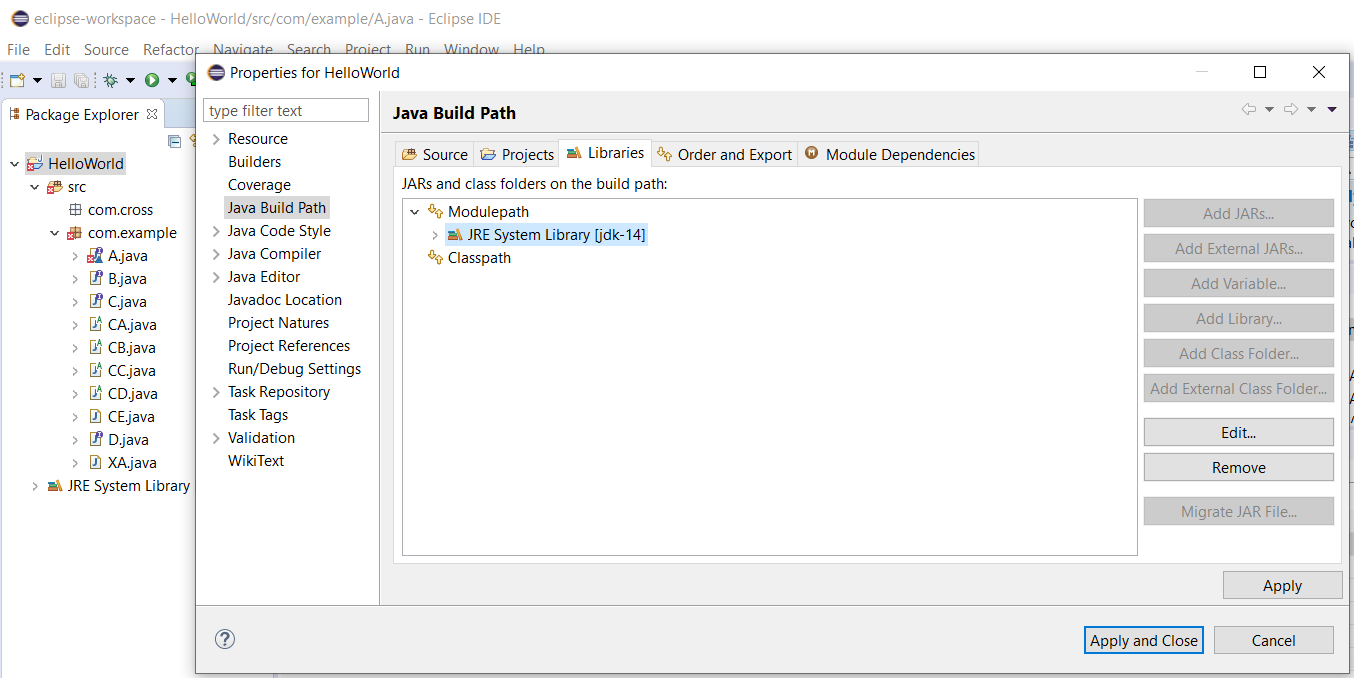

Eclipse Java Missing Download Site Offers
There may also be a link in the Start Menu. And you wont be missing out on any features if you skip that jar.Windows machine: Open Eclipse by clicking on its icon, either on the desktop or taskbar. The download site offers a number of different versions you'll want 'Eclipse IDE for Java Developers.' (We do not recommend trying to run Eclipse remotely, for example over an X connection, because it would react too slowly.) Running Eclipse Linux machine in basement lab: Open Eclipse by going to Applications -> System Tools -> Terminal and, at the prompt, typing:Usage with the Eclipse Compiler for Java If Querydsl Collections is used with a JRE.
If you do not see one, you can open it up by going to the Window menu, selecting Show View and Package Explorer. The package explorer & Creating a projectUpon running Eclipse you should see a pane labeled 'Package Explorer', probably on the left. In cse332, for instance, it makes sense to create a different project for course project 1, course project 2 and course project 3, all inside your workspace for cse332. Within a workspace you can create numerous projects each project can contain various Java files that interact together. The default location is probably fine.A note on workspaces:Workspaces in Eclipse are useful for organizing your files you may have a workspace for cse332, another for cse341, one for your personal projects, etc.
CompilingTo compile, go to the Project menu and select Build All (the hot-key for which is Ctrl-b). Creating a new class via the package explorerJust right click on the package in the package explorer that will contain your new class, and select New, then select Class Eclipse will create the file with the proper package header (if any) and the class statement. Eclipse projects can get pretty big, with multiple packages and large numbers of classes, so the organization provided here can be quite helpful. You can traverse the tree of an open project to view the packages and Java files it contains, and you can double click a file to open it up. To close a project (say, to save memory if you have numerous projects available), click right on it and select Close Project. To create a new project, right click in the package explorer pane and select New, then Java Project you'll be asked to provide a name for your project (something like project1 for the first course programming assignment is reasonable), then click Finish and your project will appear in the package explorer.If an icon in the package explorer looks like a blue folder, the project is closed and can be opened by double clicking on it.
This helps you debug as you go, instead of all at once when you compile. When you are viewing a file, lines with errors are marked (to the left) with a red icon hover the mouse cursor over the icon to see the error.Also, Eclipse checks your program as you type, marking errors and warnings, so you may see errors appear before you even 'build'. If there are errors in your code, the files will be marked in the package explorer with a red icon.
Adding existing files to a projectEclipse makes it easy to add existing files (such as those provided for project 1) to a project. To terminate a running program, go to the Run menu and select Terminate.Note: If your program executes without outputting to the console, creating a window or the like, you may not get any indication that it's running. Select the 'Arguments' tab if you want to fill in arguments to be passed to your program as it runs, and enter them in the 'Program arguments' box.Once you are done creating your run configuration, you can run it by selecting Run from the Run menu, or hitting Ctrl-f11. Double click on 'Java Application' in the list this creates the configuration and from there you can give your run configuration a particular name and select the 'Main class' to run from. A Run Configuration specifies which class's main() method to run, and what arguments to pass in.Open the Run menu and select Run Configurations.
To check the version of Java being used by a project in Eclipse, explore its tree in the package explorer until you see something like 'JRE System Library'. Java 1.6For the projects in this course, you'll need Java 1.6 (technically, 1.5 will suffice for some of them, but 1.6 is needed before the end). In the window that appears, select 'General' and then 'Filesystem', and, finally, select the location you want to export to. You can also export the entire project to a directory of your choosing by right clicking on the project in the package explorer and selecting Export. Getting the files from Eclipse for turn-in (or backup or whatever)To find out where Eclipse is keeping your files, right click on the file in the package explorer and select 'Properties' the location is shown there.



 0 kommentar(er)
0 kommentar(er)
